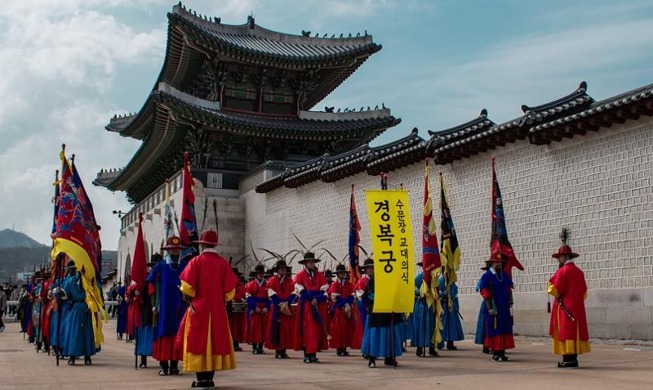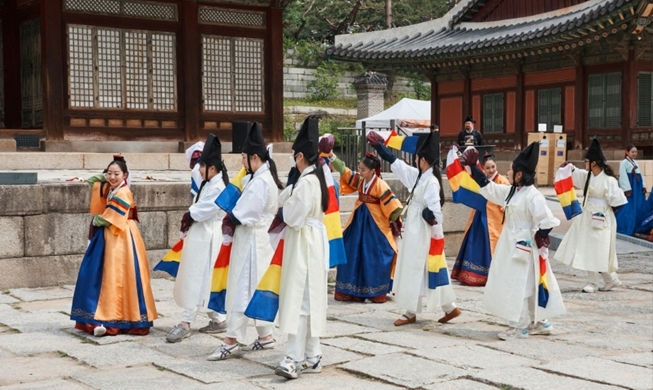-
 Korea.net's 24-hour YouTube channel
Korea.net's 24-hour YouTube channel- NEWS FOCUS
- ABOUT KOREA
- EVENTS
- RESOURCES
- GOVERNMENT
- ABOUT US
Sirutteok varieties are so popular that a total of 11 kinds of such rice cakes were recorded in the "Gyuhap Chongseo" (규합총서, 閨閤叢書), an encyclopedia written in 1809 about life in late Joseon times.
In general, the recipe begins by soaking and grinding the rice. The ground rice is placed in a steamer and topped with strained read beans. It can vary depending on what ingredients are added to the rice powder or what type of toppings is used. Among all the different types, the best-known variety of sirutteok is pat sirutteok, or red bean steamed rice cake.
In Korea, people often make rice cake with red beans and share it with others. This is due to the traditional belief that red beans ward off evil spirits. People traditionally believed that the color of red beans symbolized the yang energy, which was thought to have the power to expel evil yin spirits and prevent infectious diseases. For this reason, they made sirutteok with red beans and shared it with others to mark important days or occasions, such as banquets, the first 100-day party for an infant, birthdays, beginnings of new businesses or moving to a new home, in the belief that the rice cake would bring good luck.
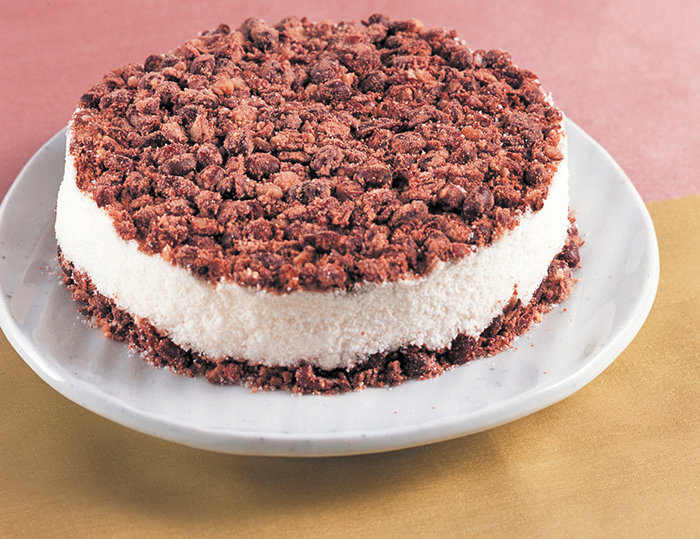
Red bean steamed rice cake, or pat sirutteok is made with red beans and rice. People make this type of rice cake to mark important occasions, such as birthdays, starting new businesses, or moving to a new home, and share it with others. Red beans were traditionally believed to ward off evil spirits.
Farmers used to make this variety of rice cake with newly harvested crops to perform shamanic or religious rituals, or gosa, especially on Ipdong (입동, 立冬), or the "Onset of Winter," one of the 24 solar terms throughout the year, according to the "Record of Seasonal Customs in the Eastern Kingdom" (Dongguk Sesigi, 동국세시기, 東國歲時記) (1849).
The dish was also enjoyed on other solar term days, such as Dongji (동지, 冬至), the winter solstice and the day with the fewest hours of daylight throughout the year. When Dongji falls between Nov. 1 and 10 on the lunar calendar, people would dub that day Ae-dongji (애동지, 兒冬至) and feed their children with red bean steamed rice cake instead of regular red bean porridge, the typical seasonal food on Dongji.
According to the Institute of Traditional Korean Food, red beans help people discharge unnecessary water in the inner body. In the court kitchen, radishes were added to the red bean steamed rice cake to make it a sweeter dessert.
** Ingredients
150 g (1.5 cup) ground non-glutinous rice
1.5 g salt for the rice powder
30 g water (2 tbsp)
70 g red beans
200 g water for blanching (1 cup)
600 g water for steaming (3 cups)
1.2 g salt for red beans
2 kg water for steaming (10 cups)
** Preparation
1. Add salt to the rice powder and sift the powder mixture using a strainer. Add water and mix well. Sift the mixture again using a strainer.
2. Wash the red beans and drain them through a strainer.
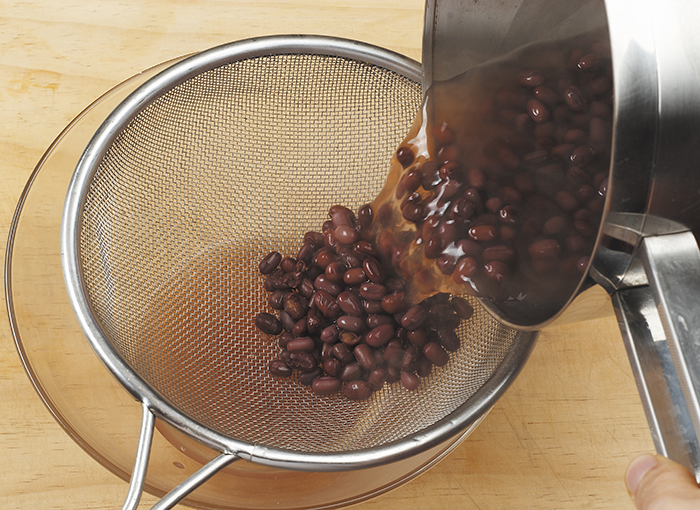
Wash the red beans and drain them using a strainer.
** Recipe
1. Put the red beans and water for blanching in a pot. Boil it over high for 4 minutes. Remove the blanched water. Put the water for steaming in a pot with the red beans. Boil it for 25 minutes over high for steaming. Lower the heat to medium until the red beans are cooked. Remove the water from red beans using a strainer.
2. Heat the pot and add the cooked red beans. Heat the red beans over medium to remove the water. Add salt when the red beans are warm. Crush the red beans so that the beans are pulverized to about half their size in order to make the red bean topping.
3. Put water into the steamer and boil over high for 9 minutes. Cover the steamer with a wet cotton cloth and place a 16-centimeter cake mold on top of the cloth. Spread about half of the mashed red beans on the bottom. Put the rice powder on the red beans and make the surface even. Cover the rice powder with the red bean topping.
4. Steam the cake for about 15 minutes.
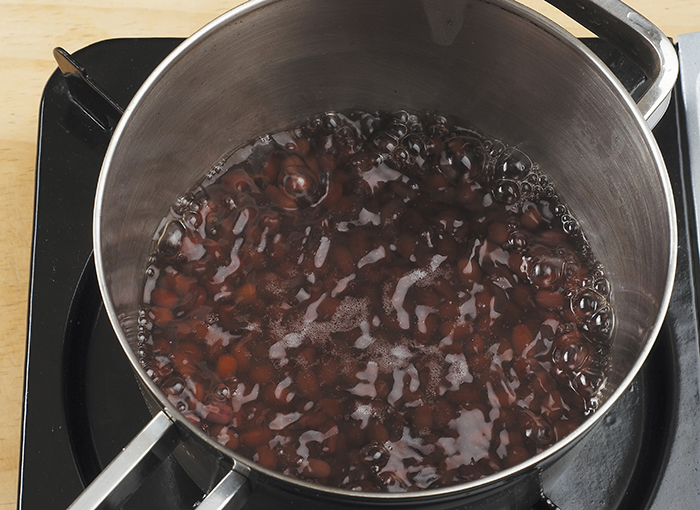
Put water and red beans in a pot and boil it for about 4 minutes.
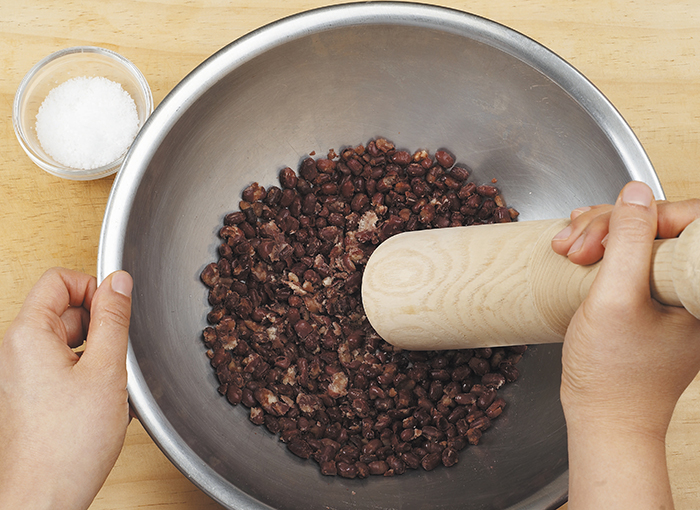
Heat the steamed red beans to remove any water and add salt when warm. Mash the red beans into half their size. Add salt to the red beans to make the taste deeper rather than sugary.
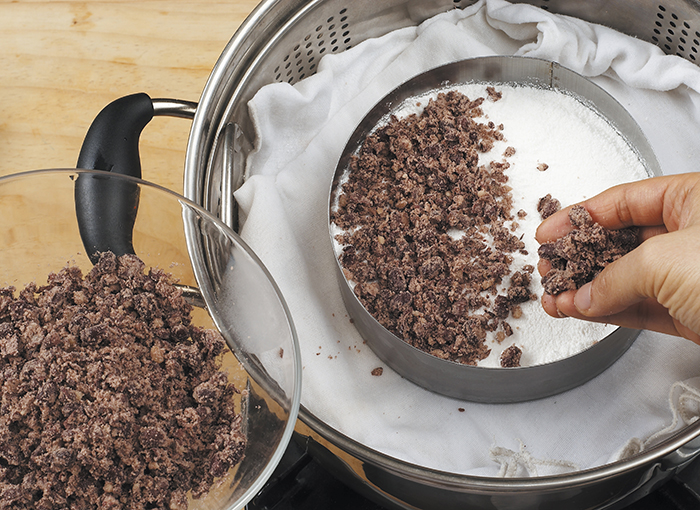
Put water in the steamer and heat it. When it begins to boil, place a wet cotton cloth and place a cake mold on top of the cloth. Put the mashed red bean paste on the bottom and then place rice powder on top of it. Make sure the surface is even and put the remaining red beans on top. Boil the rice cake about 15 minutes. You can also change the amount of water, depending on the moistness of the rice powder.
Managed by Yoon Sojung
Korea.net Staff Writer
In cooperation with the Institute of Traditional Korean Food (ITKF)
Content from “The Beauty of Korean Food: 100 Best-Loved Recipes”
arete@korea.kr




